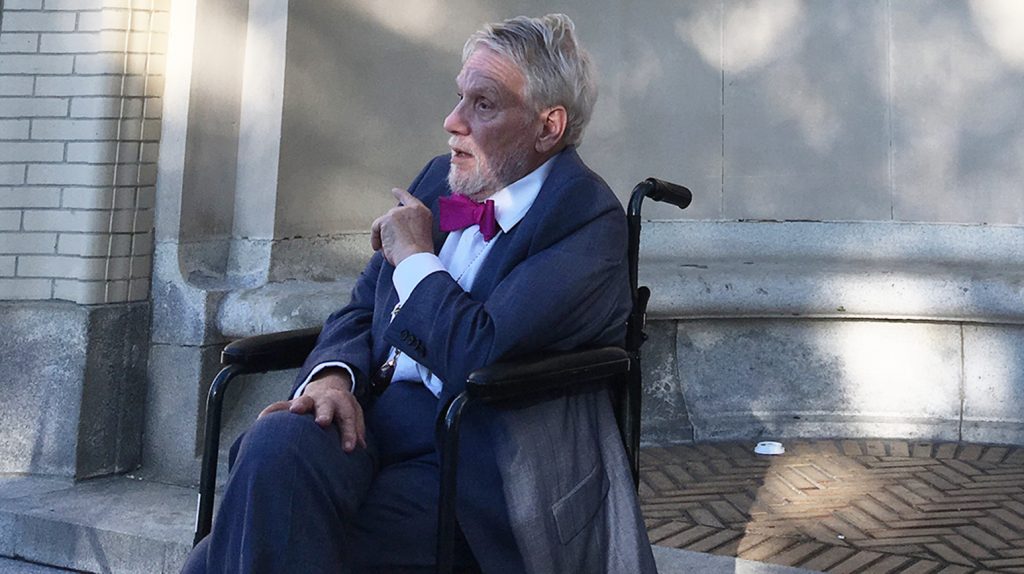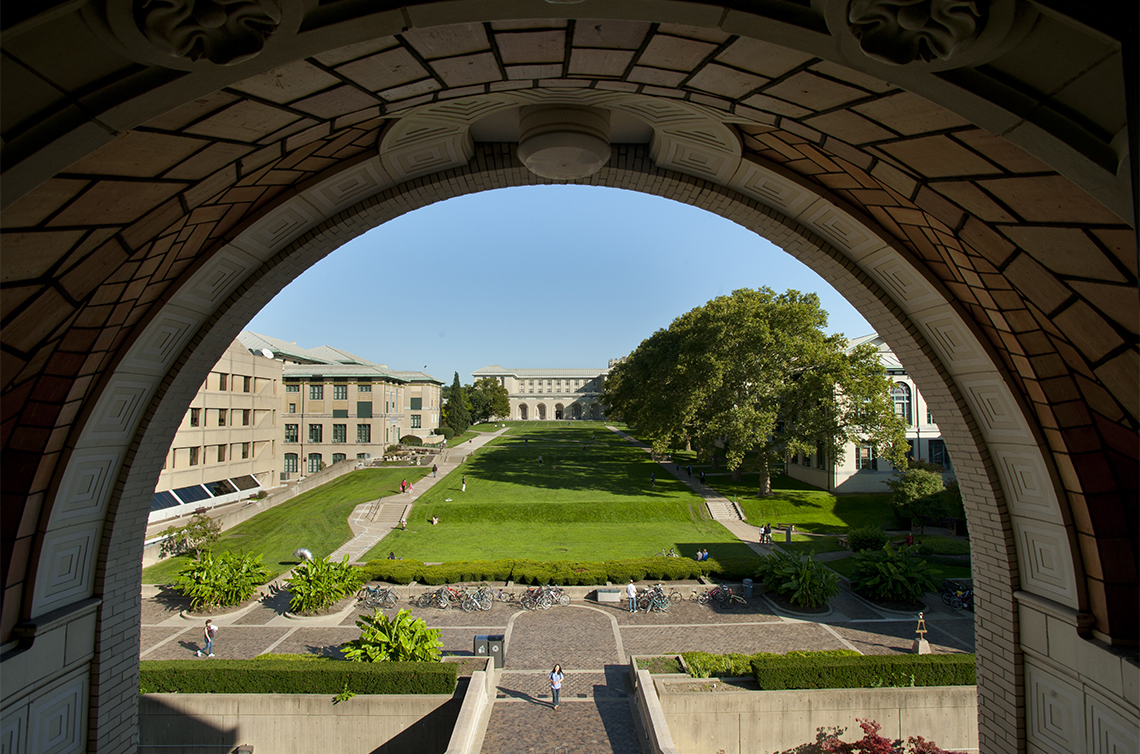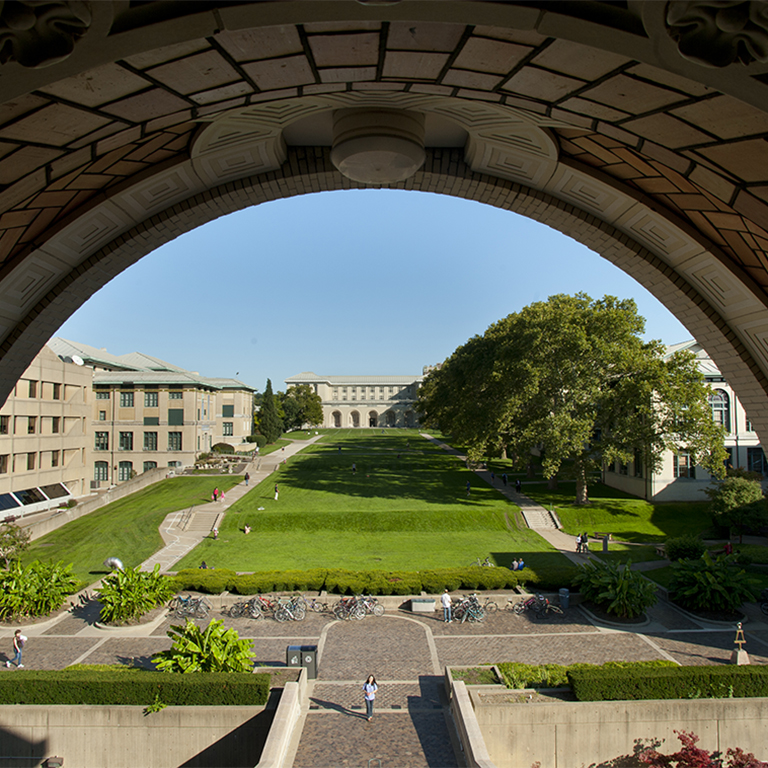
Early in his career, Lowry Burgess turned his gaze upward beyond the earth’s atmosphere, contemplating an expanded notion of time and space. This expanded view opened his imagination to a new type of art that examined a bigger, deeper set of poetic ideas. One of the few pioneers of the Space Art movement and an internationally renowned artist, Lowry created the first art payload taken into outer space, which was carried aboard NASA’s Space Shuttle Discovery in 1989. For nearly half a century, Lowry has also been a cornerstone of Carnegie Mellon University’s School of Art. This past year, he retired.
Lowry’s commitment to education has been unparalleled throughout his prolific career. He is the former Dean of the College of Fine Arts at CMU and is a Distinguished Fellow in the Frank-Ratchye STUDIO for Creative Inquiry, which he co-founded. Recognizing the diversity and depth of knowledge at CMU, Lowry looked beyond the typical confines of art, both in his own work and in his educational philosophy. He brought together seemingly disparate fields like visual art and computer science to encourage students to harness the power of technology to push art and human creativity in brand new directions.
Lowry was instrumental in leading a team of CMU students, faculty, and alumni, along with international artists, scientists, designers and engineers, to create an artwork titled Moon Ark, which will be carried to the moon in 2019 as part of the Robotics Institute’s competition for the Google Lunar XPrize. Like much of Lowry’s artistic practice, this work pushes the boundaries of technology to outer space while creating a poetic examination of life on earth.
For 27 years, Lowry has also served as a Fellow, Senior Consultant, and Advisor at the Center for Advanced Visual Studies (CAVS) at MIT, where he has created and directed large collaborative projects and festivals in the US and Europe. Recently, Centerbeam. A Performative Sculpture by CAVS was on view at ZKM | Center for Art and Media Karlsruhe, concurrent with Documenta 14. The work recreated Centerbeam, a massive outdoor installation conceived of by Lowry and shown at Documenta 6 in 1977.
Among his many achievements, Lowry is the creator and founder of “First Night,” the international New Year’s arts festival. He originated the first “Art in the Subways” program for the Department of Transportation and has developed and advised on more than a dozen major city scale projects.
Following the destruction of the Buddhas in Bamiyan, Afghanistan in 2001, Lowry wrote the “Toronto Manifesto, The Right to Human Memory.” The Manifesto led to the creation of a new global value/incentive for the protection of cultural sites throughout the world, which is currently in the process of being implemented by UNESCO and the World Bank.
“There are very few artists who have accomplished the impossible,” said Charlie White, Head of CMU’s School of Art. “In his career, Lowry Burgess has achieved the impossible numerous times, from breaking the barriers between artists and scientists across academia to jettisoning the first artwork into outer space.”
Lowry was educated at the Pennsylvania Academy of the Fine Arts, the University of Pennsylvania and the Instituto Allende in San Miguel, Mexico. His artworks are currently held by museums and archives across the US and Europe, and he has exhibited widely in art and science museums in the US, Canada, Europe and Japan.
He has received awards from the American Academy of Arts and Letters, the National Institute of Arts and Letters, the Guggenheim Foundation, the Rockefeller Foundation, the National Endowment for the Arts, the Massachusetts Artists Foundation, the Kellogg Foundation and the Berkmann Fund. He received the Leonardo Da Vinci Space Art Award from the National Space Society. His book, “Burgess, the Quiet Axis” received the Imperishable Gold Award from Le Devoir in Montreal.
During his time at CMU, Lowry has helped shape how the University approaches art education. His collaborative approach has pushed contemporary artistic practice forward and has helped shape generations of artists and thinkers. Though he will be missed as faculty, his lasting influence will continue to resonate throughout the University. Thank you, Lowry!




